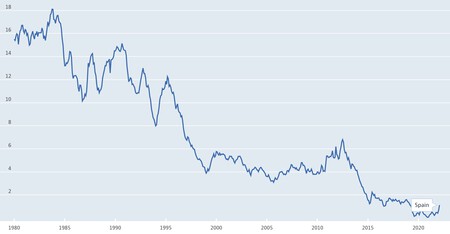It is expected that in a few months ‘Ethereum 2.0’ will definitely arrive, the new version of this cryptocurrency, and it will do so with radical changes. Those changes will probably cause us to start talking a lot less about ‘mining’ and a lot more about ‘staking’, a rewards system that is a kind of version 2.0 of our old checking accounts (when they were paying decently).
The era of ‘Proof-of-Work’ fades. Both bitcoin and Ethereum have been based on the PoW mechanism since their inception. That is: if you solved a certain computational problem with your work (time and processing power), you were rewarded with those cryptocurrencies. Mining was accessible to everyone in the beginning, but in recent years it has become a segment dominated by large miners.
Large mining farms have been created that consume a lot of energy and are based on specialized computers (ASIcs) in the case of bitcoin or graphics cards (GPUs) in the case of Ethereum. The latter has caused, for example, that the options of getting the latest versions of NVIDIA or AMD have been almost impossible.
The era of ‘Proof-of-Stake’ is coming. Some cryptocurrencies have already switched to another mechanism where the rewards are based on something else. Users are no longer rewarded for their work, but for the cryptocurrencies they have “immobilized” to support that ecosystem.
‘Ethereum 2.0’ will precisely make use of a PoS mechanism that will make ETH mining disappear —which also helps significantly reduce the environmental impact of mining—, and that will make mining with your graphics card a thing of the past for this and other cryptocurrencies that are derived from it. That’s when we’ll really start talking about ‘staking’.
What is ‘staking’. With this system, transactions are no longer validated when solving those complex mathematical puzzles. Instead, users validate transactions according to the number of cryptocurrencies they have in the system, based on their ‘stake’.
That participation is basically immobilized or blocked for a while, and contributes to the overall value of the ecosystem and the PoS consensus system used. Users with greater participation have more options to validate transactions and therefore obtain greater rewards. The more you contribute (participate), the more you earn.
But is this going to make money? He is giving it. Solana and its SOL token make use of this system and the profitability is around 5.8% per year. Things are even better for Polygon and its MATIC token, whose annual return is currently estimated at 27.18%. There are other cryptocurrencies that make use of this system and the returns fluctuate a lot.
The reason? As always, volatility is still present in the cryptocurrency market. Right now, for example, the cryptocurrency OHM (Olympus) has an estimated annual return of 240.58%, but those numbers are by no means a guarantee (much less an investment recommendation, here, as we always say, maximum caution) .
Advantages of staking. Beyond the environmental benefits —and the fact that the graphs will theoretically be able to be bought at normal prices again—, the potential of staking is clear when it comes to achieving an interesting return for cryptocurrencies. It is like those actions that, in addition to rising in value, give us dividends. Those who participate in these projects may also have the satisfaction of contributing to their becoming an important part of the (new?) financial system, but obviously the attraction is in this passive income format: I have immobilized money, but I know (well, not really) that is going to give me some income.
Staking risks. We have already talked in the past about the volatility of cryptocurrencies. Prices can go up, yes, but they can also go down. Holding a stake in a falling crypto will be little (or not) profitable. There are also platforms that have “permanence” such as mobile operator contracts, and you will not be able to move your crypto during that time.
Those investments are less flexible than the ones we would make if we bought cryptocurrencies and then exchanged them for others. The analogy with the financial world is clear: staking would be something like having an investment fund that pays dividends and has certain permanence (and penalties if you do not comply with them), and the other would be to operate with shares that we can sell at any time.

Long-term interest rates (%annual) have changed a lot in recent decades. Having a checking account was a bargain in the 80s. Today it costs us money. Source: OECD.
Current accounts 2.0. To a certain extent, staking is very reminiscent of the current accounts of a lifetime. Before, one would go to the bank, store their savings there, and these would generate interest that was very attractive for a certain period of time. Having money in the bank was profitable, but we have reached a time when it costs money to even have an account.
With staking we have a similar model, although profitability is certainly not guaranteed, nor is the value of the cryptocurrency that we stake, which could plummet and leave us with zero and without the desired profitability.
Once again, we insist: these products continue to have extreme volatility, so experts always advise that if you “invest”, it should always be done with money that we are willing to lose. Here it is always good to remember that there have been many personal misfortunes – and not just losing cryptocurrencies – and caution and common sense are more important than ever.
George is Digismak’s reported cum editor with 13 years of experience in Journalism
